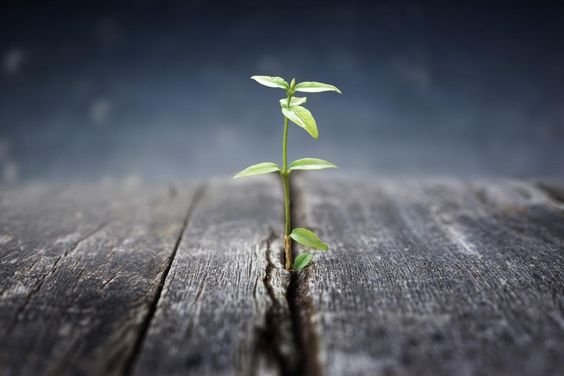A trophic cascade is an ecological event that involves changes to the structure of an ecosystem resulting from changes to animals or plants at one or more levels of the food chain. The term trophic cascade was first used by ecologist Robert Paine in his 1969 publication. In that same article, Paine defined the term keystone species, a related concept, and explained how ecosystems can function and collapse.

Changes to ecosystems occur all the time for many different reasons. Volcanic eruptions, floods, droughts, and asteroid impacts all cause dramatic changes at different levels of the food chain. Trophic cascades have become more common, however, as a result of human actions. Pollution, habitat destruction, and development of farms and plantations in formerly wild areas are all causes of trophic cascade. Climate change is also a primary cause of trophic cascades.
Relatively small events, such as a prolonged drought, shrinking habitat, or human encroachment, can lead to trophic cascade. By the same token, relatively minor forms of mitigation, such as the reintroduction of certain species, can help to repair a collapsing ecosystem.
Key Terminology
The question “What eats what?” is answered by the food chain, which represents which organisms eat one another. The food chain explains why each group of organisms is critically important to the ecosystem in which they live.
At the bottom of the food chain are producers: organisms such as plants, plankton, and bacteria that exist and are consumed in huge quantities.
Next are herbivores. These are the organisms that consume the producers.
At the top of the food chain are the predators: animals that eat other animals. Predators are also described as keystone species; removing or changing their status in an ecosystem has a profound impact on the other species in the system.
Remove or change any part of the food chain, and the entire chain will be affected. Make specifically critical changes, and the entire chain will collapse. Trophic cascades per ecosystem vary; in fact, there are several different types that have been studied across a range of landscapes:
A top-down cascade occurs when the top predators are impacted. Take away the top predators, and herbivores will have more opportunity to eat and reproduce. The resulting increase in herbivores is likely to devastate plant life and, in the long run, the disappearance of producers in the ecosystem. In addition, when top predators disappear, second-tier mesopredators become more common. When wolves became extinct in Yellowstone Park, for example, coyotes became more prevalent.
A bottom-up cascade is the result of changes to the bottom level of the food chain. This type of trophic cascade occurs when, for example, swathes of rainforest vegetation are burned — leaving little for herbivores to eat. Herbivores may die off or migrate; either way, top predators have less to eat. Loss of foundation species such as trees that produce edible seeds and nuts, or animals which exist in very large quantities, can also lead to a trophic cascade. This occurred, for example, with the loss of the huge herds of bison that once populated the North American plains.
Subsidy cascades occur when animals rely on food sources that are external to their ecosystem. For example, when appropriate plants are less available, herbivores may come to rely on farmers’ crops. More herbivores lead to more predators — creating an ecological imbalance.
Where Do Trophic Cascades Occur?
Trophic cascades occur all over the world, in both terrestrial and aquatic ecosystems. They have occurred throughout the planet’s history, sometimes on a catastrophic level. Prehistoric mass extinctions completely changed the evolution of life on Earth.
Some trophic cascades occur as a result of natural disasters or weather events; others are directly caused by human actions. Experiments have shown how significantly the loss of a single species can impact an entire ecosystem.
Trophic Cascades in Terrestrial Ecosystems
Terrestrial, or land-based, trophic cascades occur in every part of the world. In recent times, the vast majority of trophic cascades are the result of human intervention. In some cases, once the impact is understood, activists have stepped in to repair the damage.

Yellowstone’s Wolves
The area that became Yellowstone National Park was, in the late 1800s, a haven for gray wolves. In fact, wolves roamed the area in packs as a top predator. Human beings, however, hunted the wolves to extinction in the area; by the 1920s wolves had been eradicated from the park.4
For a decade or so, a wolf-free environment was considered ideal. Then, as the elk population exploded, concerns were raised. The increasing elk herd no longer needed to move from location to location to avoid predators. As a result, the elk were devastating trees and other plants, reducing ground cover and food for other species. Reduction of plants along waterways was also leading to ground erosion. Aspen and willow-beaver wetlands were shrinking and disappearing.
At the same time, with the disappearance of the wolves (know as apex predators), the number of coyotes increased. Coyotes tend to hunt pronghorn deer and, as a result, the pronghorn deer population shrank.
In response to this ecological threat, biologists decided to restore wolves to Yellowstone. In 1995, eight wolves were delivered from Jasper National Park in Alberta, Canada. While it took some time for the wolves to habituate themselves to their new home, the results were impressive. Plant life has been restored along with a number of species including the beaver, which had nearly disappeared. The coyote population is smaller, and the number of pronghorn deer has increased. There is, however, a potential downside: the number of elk killed by the wolves is greater than anticipated, leading to uncertainty about the final outcome of wolf reintroduction.
Tropical Rainforests
Tropical rainforests have been under extreme environmental stress for decades, so it’s no surprise that trophic cascades are common. It’s not always obvious, however, that a cascade has occurred. To determine whether a cascade is in progress, researchers compare damaged ecosystems to intact ecosystems.
In 2001, a researcher named John Terborgh took advantage of a manmade disruption to rainforest habitats to actively look for trophic cascade.5 The area he researched had been broken up from an intact wetlands to a set of islands within the rainforest. What Terborgh discovered was that the islands without predators had an over-abundance of seed and plant eaters, along with a scarcity of seedlings and young canopy-forming trees. Meanwhile, the islands with predators had normal vegetative growth. This discovery helped to define the importance of apex predators in ecosystems; it also provided researchers with the tools to recognize trophic cascade even where it might not be obvious.
Malaysian Subsidy Cascade
Subsidy cascades are not always caused by human intervention.6 In some cases, the supplement comes from another neighboring ecosystem; in many cases, however, the supplement comes from farms, plantations, or even suburban gardens. For example, predators may prey on cows rather than on wild prey which are harder to find, while herbivores may eat plants growing in a farmer’s field.
To learn more about subsidy cascades, researchers studied a situation in which protected wildlife in Malaysia were foraging from a nearby palm plantation. They discovered that wild boar, in particular, were enjoying the “fruits” of farmers’ labor with significant negative ecological impacts. According to the study, which drew from twenty years of data, the oil palm fruit was so attractive to the wild boar that there was a 100% increase in their crop-raiding behavior.6 This drew the boar away from the forest interior, where they typically use understory plants to build nests for birthing their young. There was a 62% decline in the growth of forest tree saplings which led to smaller trees and reduced habitat for a wide range of animals.
Trophic Cascades in Aquatic Ecosystems
Trophic cascades occur in fresh and saltwater ecosystems in much the same way as they do on land. When organisms are removed from their ecosystems, the impact can cascade up and down the food chain, causing significant stress. Researchers have also found that changes to aquatic ecosystems can have an impact on the chemical makeup of the water.
Lakes
Lakes are small, enclosed ecosystems that are particularly vulnerable to trophic cascade. Experiments conducted toward the end of the 20th century involved removing top predators (bass and yellow perch) from freshwater lakes and observing the results.8 Trophic cascades occurred which changed production of phytoplankton (a major source of nutrition) as well as the activity of bacteria and the respiration of the entire lake.
Kelp Beds
In Southeast Alaska, sea otters were widely hunted for their fur. Otters were (and in some areas still are) top predators in kelp beds, near the Pacific coastline. When the otters all but disappeared from kelp bed ecosystems, invertebrate herbivores such as sea urchins became much more populous. The result: extensive areas of “urchin barrens” where the kelp itself has disappeared. Not surprisingly, research shows that in areas where otters remain the kelp bed ecosystems are healthier and more ecologically balanced.
Salt Marshes
Salt marshes are diverse ecosystems that depend largely on the producers at the bottom of the food chain. Consumers in the salt marshes are controlled by the activities of crabs and snails. Researchers discovered that snails, for example, control marsh plant growth.9 When blue crabs, which eat snails, disappear from the ecosystem, snail populations explode and marsh plants are destroyed. The outcome: salt marshes become uninhabited mudflats.
Climate Change and Trophic Cascades
There is no question that climate change is having — and will continue to have — a major impact on ecosystems.10 As ecosystems change, the potential grows for trophic cascades to occur. There are many possible causes:
More precipitation in some areas, which will cause a change in the chemistry of water in salt marshes and estuaries;
Warmer temperatures, which will impact the ability of various organisms to survive in their current environments and may encourage migration to cooler locations;
More droughts in some locations, which will lead to dips in the reproductive rates of certain species and will also encourage wildfires that may devastate habitats.
The overall outcome is likely to be a drop in biodiversity, leading to trophic cascades in many locations.
Fortunately, research on trophic cascades is helping researchers and activists plan ahead and take action before cascades can begin. Some projects include:
Restoring wildlife habitats, such as grasslands and forests;
Supporting coastal ecosystems, such as dunes, mangroves, and oyster beds;
Planting along freshwater rivers and lakes to protect the waterways from erosion and providing shaded habitats for cold water fish and other fauna;
Understanding the signs of a trophic cascade and how to intervene appropriately to lessen or eliminate negative outcomes.
Specific prevention and mitigation projects continue to make a difference. At the University of Oregon, the Global Trophic Cascades Program is designed to investigate the role of predators in trophic cascades and educate enrolled students interested in the intersection of forestry and wildlife studies.As part of the Department of Forestry, its professors and students are heavily involved in wolf-related research in Yellowstone National Park. Meanwhile, the Rewilding Argentina Foundation is working to restore jaguars — apex predators — in the Ibera wilderness area.








